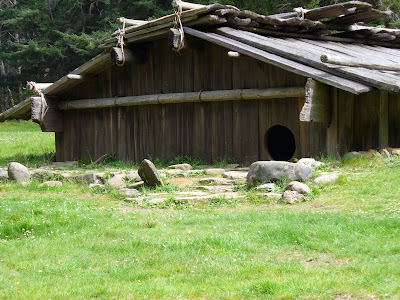So, I recently came across a Tolkien dvd I didn't think I'd seen before -- though at this point I've gotten the half-dozen or so that came out about the time of the Peter Jackson movies all mixed up. Some I know were good, others quite bad. But, as I say, after I while I forget which is which, or why the good ones were good, or what particular interesting bits were in which. So, I've decided to rewatch them all over the next few weeks and, if it seems worthwhile, to post a few notes here about each. Consider it a personal exercise in disambiguation.
And the first is the new one which just arrived day before yesterday: THE MASTER OF THE RINGS: THE UNAUTHORIZED STORY BEHIND J. R. R. TOLKIEN's THE LORD OF THE RINGS. With a name like this, and the thoroughly generic cover, it looks like one of the bottom-end among the Tolkien documentaries. But on the other hand, it's from Lion's Gate, who have done some good documentaries in the past.
Watching it, the thing I found most interesting is its complete lack of a narrative. With most documentaries, the filmmaker has an idea about the subject that he or she wants to get across, and he or she selects and arranges the material accordingly. Not here. Instead, MASTER OF THE RINGS offers a melange of episodes, each unrelated to the one before except that they're all in some way about Tolkien.
First, several Tolkien Society members talk about Tolkien's works -- and, to the filmmaker's credit, there's no attempt to make Tolkien fans look weird (as is all-too-often the case).
Second, a guy stands in front of houses where Tolkien lived in Oxford and talks some about Tolkien's life at the time. Unfortunately, his grasp on the details of Tolkien's biography is a little shaky; more on this latter.
Third, we have a too-long segment on what the film calls a larp but are really fantasy/medieval battle reenactments from a group called Dagorhir.
Fourth comes a segment where Humphrey Carpenter talks about Tolkien; although this only ran about three and a half minutes it was for me the highlight of the show. Plus, there were several further clips from the same interview later on. The best bits were (1) HC's observation that when Tolkien came to see his adaptation of THE HOBBIT Tolkien looked pleased at the parts from the original he'd retained and frowned at the parts Carpenter had changed, which pretty much says it all, and (2) HC on having a conversation with Tolkien: "he'd got bad at communicating, because he'd lived with it so long so he . . . never explained what he was talking about".
Fifth profiles a singer named Bob Catley who looks like David Lee Roth disguised as Ozzy Osbourne, who performs some songs from his album about Middle-earth.
Sixth features the pastor at Tolkien's neighborhood church, the one he attended when he lived up on Sandfield Road. This part was utterly charming; the guy obviously would have loved to have been there back in Tolkien's day. It's a v. simple little church; we do get to see where Tolkien usually sat, beside station #12 (= the twelfth station of the cross, I assume).
Seventh shows Roger Garland at work.
Eighth shows the Eagle and Child.
Ninth features Merton (quite untruthfully asserting that Tolkien was a "very popular professor . . . his lectures were always v. well attended") (HC chimes in to say no, not so much).
and finally Tenth briefly mentions the films, which were forthcoming at the time. Here the best quotes go to HC, who observes "the films will increase the size of his pedestal" and a TS member who worries that she "might not like it as much as I want to like it".
And periodically, punctuating it all, it returns to the guy standing in front of Tolkien's houses -- first at St. John Street and Alfred Street, then on Northmoor Road, then the house on Sandfield Road, the apartment at Merton, and finally at Wolvercote cemetery. You really think they would have gotten a guide who knew the details of Tolkien's life better than this fellow does -- he gets the general outlines right but makes a bad gaff at Sandfield Road when he points to the JRRT-lived-here plaque and claims that the dates given on it (1953-1968) are wrong -- in fact, he claims the Tolkiens went on living here right up to Edith's death in 1973. As my friend Anders once said in another context, "Wrong, wrong, wrong." Anyone can make a slip, I suppose, but this one seems particularly egregious since he's contradicting the true facts literally right in front of him. Ah well; I've seen worse distortions.
In the end, I decided that the 'assemblage' nature of the documentary was deliberate. The filmmaker I think wanted to show how people take Tolkien's work and make what they want out of it -- scholarship, music, mock-battles, painting, or whatever. The only connecting thread is Tolkien himself, and their joint love of his works.
Evaluation: you won't learn anything about Tolkien you didn't know before, but you might have an enjoyable time watching others convey the form their appreciation of his works takes. The best part are seeing the Oxford sites (including his favorite tree) and the HC bits; would that there were more.
--JDR
current reading: NAVIGATIO SANCTI BRENDAN



















